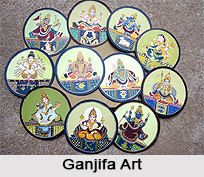 Culture of Mandya district in Karnataka as of any other place, is inherent in the traditions that are embraced and passed down by the generations. It is found contained in the art, architecture, history, language and culture of the place, and is sought to be maintained through the ages.
Culture of Mandya district in Karnataka as of any other place, is inherent in the traditions that are embraced and passed down by the generations. It is found contained in the art, architecture, history, language and culture of the place, and is sought to be maintained through the ages.
Mandya is the land of art, and culture. Drama is a passion of most people of this district. Mandya District is well known for patronizing dramas and artists. Mythological dramas are staged in many villages on regular basis. Folk theatre, dance and songs are an integral part of the rural life. Temple festivals and village festivals, called Jatra are performed with great enthusiasm and gaiety. These performances are marked by colourful traditions and fanfare. It has state wide reputation for its colourful and luxurious drama sceneries. Well worth a mention here are `Benne` and `Bangari`. Smt. Puttamma, who associated herself with `Hirannaiah Sthree Nataka Mandali`, was also a Hari Vidhwan. Another well-known artist in the field of drama was `Malavalli Sudramma`.
When writing about the legends of drama in the Mandya district, the story remains incomplete if the name of Sri H.K. Yoga Narsimha of Hosaholalu is not mentioned. The role of Gelayara Balaga is significant in introducing the modern dramas for the spectators of Mandya. This organisation staged many artistic dramas and also provided a forum to many drama organisations such as Rangayana, Ninasam-Thirugata etc. The contribution of Late Sri. K.V. Shankare Gowda to this field is also unforgettable. He has written a drama Paduka kireeti based on the Ramayana Dharsanam.
The Mandya district is also famous for Ganjifa Art. The Ancient Indian treatise, Citra Sutra, states that of all the Arts, painting is the best. Paintings served not only to decorate the walls of a house but were perceived to be `Mangala Vastus` or objects of auspiciousness. That is, paintings brought happiness and peace to the viewer and also lent beauty and ambience to a home. Mysore Ganjifa Art had almost been lost in India till it was revived by Raghupathi Bhatta. Deeply devoted to the ancient techniques of depicting mythological themes with minute, intricate and detailed symbolism, Raghupathi Bhatta has mastered the miniature style of painting.
Utilizing the rich natural resources of flowers, leaves, sandalwood and tamarind paste, as prescribed in the ancient Indian texts to give colour and form to his miniatures, Raghupathi Bhatta also lacquers the paintings to preserve them for posterity. The Bhagavad Gita or the song of the Lord serves as the source of inspiration for Raghupathi Bhatta`s paintings. The Gita was not merely advice given to Arjuna by Lord Krishna in the battlefield. It is the source of mystic philosophy, practical wisdom and beautiful poetry to the eyes of the artist, critic and ordinary beholder or rasika.



















